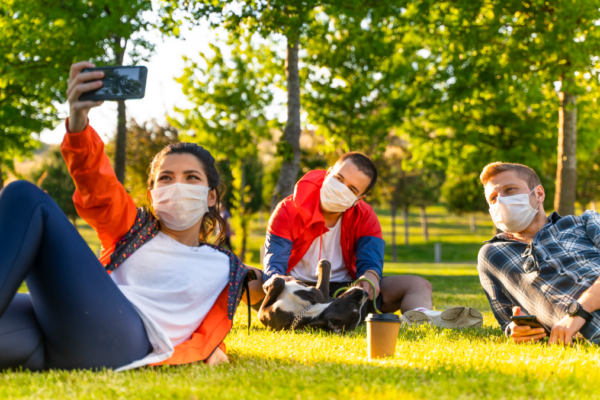
By: Dona Dmitrovic, Director, Center for Substance Abuse Prevention
In a world filled with a seemingly endless number of troubling headlines, it seems that everyone is looking for a bit of good news these days. And here it is: Underage drinking and substance misuse prevention is making an impact across the country!
According to SAMHSA’s National Survey on Drug Use and Health (NSDUH), instances of any alcohol use by individuals under age 21 have decreased since 2002. And between 2002 and 2019, current drinking by 12- to 20-year-olds declined from 29 percent to 19 percent.
While alcohol use by underage people has decreased since 2002, the decrease has been greater for underage males than for females. In 2019, more girls than boys reported past-month alcohol use. This highlights that while prevention is working, new challenges are emerging that require us to adjust attention and our strategies. And one of the biggest new challenges facing underage drinking prevention right now is the COVID-19 pandemic.
Since March 2020, young people have had to navigate disruptions in education, their social networks, and the disproportionate impact the pandemic has had on communities of color. As prevention professionals, we know that these are risk factors that can lead young people to start using and misusing substances. In fact, the CDC found that 1 in 4 young people ages 18 to 24 started or increased substance use in the past 30 days to cope with stress associated with COVID-19. Our prevention work needs to adapt to the new landscape. Fortunately, federal resources are rising to the occasion and providing communities with tools they can use even during the pandemic to promote prevention.
SAMHSA’s Center for Substance Abuse Prevention offers programs and resources to help communities tackle the impact of alcohol and other substances among youth and young adults. A key resource is the Communities Talk to Prevent Underage Drinking initiative, which launched its eighth round on February 4 and has an impressive track record of connecting communities to uncover and work through specific issues they are facing together.
Keeping disruptions to the prevention landscape in mind, this round of Communities Talk emphasizes activities that account for social distancing guidelines and changes in how individuals, families, and communities interact. By making these adjustments, we can maintain our commitment to underage drinking prevention while responding to new challenges in our communities. This is how we ensure Communities Talk 2021 continues to mobilize communities to raise awareness and implement evidence-based strategies to mitigate alcohol’s negative effects on young people. It also ensures prevention professionals understand the value of using Communities Talk as a tool to address mental health challenges created by the COVID-19 pandemic that we know can lead to unhealthy coping habits, such as alcohol use by young people.
I invite you to see for yourself the incredible prevention work communities have done in 2019 by reading success stories that communities have shared with us. These stories illustrate the inspirational events they have hosted that contributed to reduced rates of underage drinking in all 50 states and 6 U.S. territories. In 2021, we know communities will leverage this initiative to create new and inspiring ways to advance prevention.
SAMHSA offers a variety of other materials and resources communities can use, including many that combine personal stories with data to make prevention strategies attainable:
- The Sound of Your Voice –public service announcement and parent guide show the consequences of underage drinking that young adults transitioning to college often experience, as well as the vital role that parents can play in determining whether a young person decides to drink while underage.
- The “Talk. They Hear You.” national media campaign aims to reduce underage drinking and substance misuse among youth under the age of 21 by providing parents and caregivers with information and resources they need to talk about alcohol and other drug use with their children early.
- SAMHSA’s Substance Misuse Prevention for Young Adults guide supports health care providers, systems, and communities seeking to prevent substance misuse among young adults.
- The College Drinking: Prevention Perspectives two-part video series shows how underage drinking prevention strategies are implemented on college campuses: 1) “Lessons Learned at Frostburg State University” and 2) “Embracing Culture and Context to Prevent Underage Drinking.”
- The Quick Start Planning Guide includes everything community-based organizations need to know to begin organizing a results-oriented underage drinking prevention activity. The guide includes detailed steps for planning an activity, promotional tips using traditional and social media, ideas for sharing your work, and commonly asked questions about how to use a Communities Talk stipend
To learn more about the many ways SAMHSA supports underage drinking prevention both nationally and locally, visit www.stopalcoholabuse.gov. This is also a great place to learn about Communities Talk and take the first step in using this initiative to support underage drinking prevention in your community.
We are proud of the progress we’ve made so far, and we are excited to see what the future of prevention holds for our nation. Thank you for your continued support in reducing underage drinking and substance misuse.
Prevention works!
